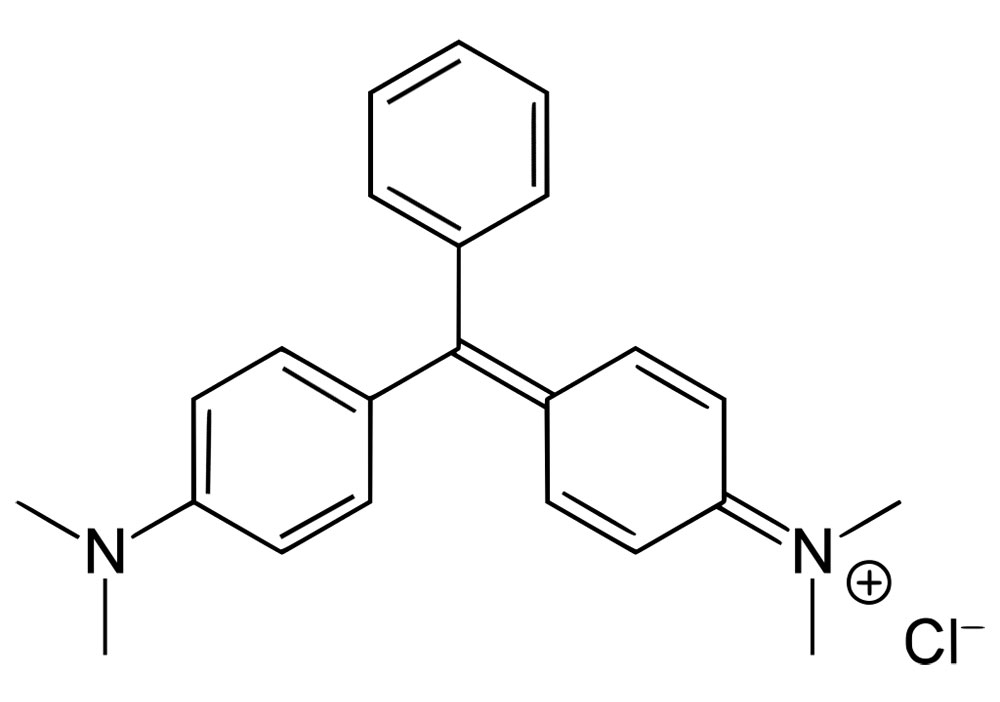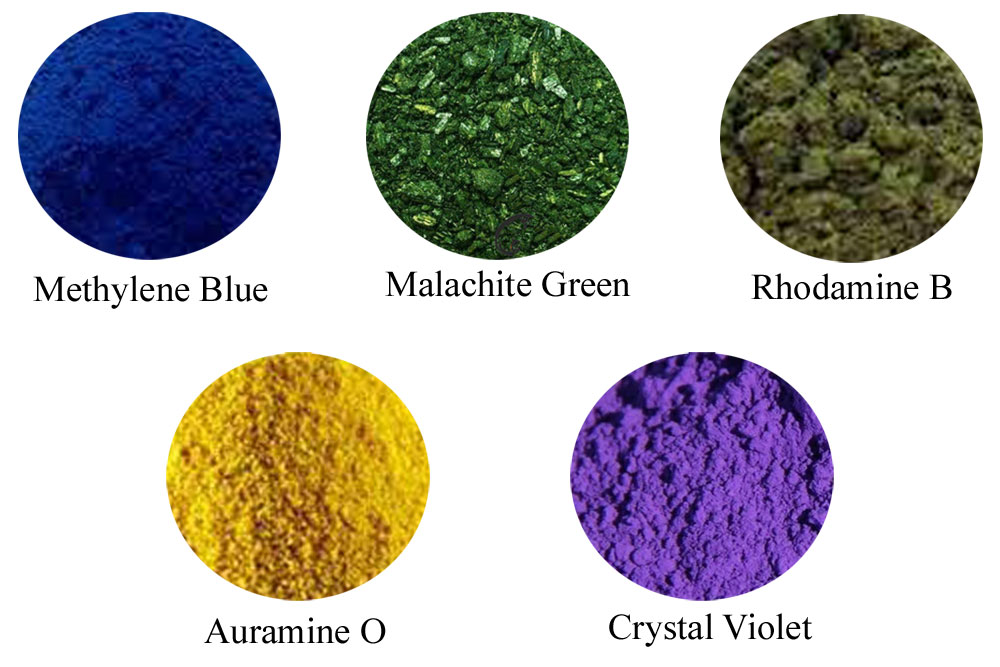A basic dye is a type of dye that is commonly used in the paper mill industry for coloring paper. They are derived from organic bases. Basic dyes are water-soluble and have a positive charge, which allows them to easily bind to negatively charged materials like paper fibers. These dyes are often used to produce bright, vibrant colors, and are particularly useful for coloring paper products that require high color intensity, such as gift wrapping paper or tissue paper.
Some of the most commonly used basic dyes in the paper mill industry include methylene blue, crystal violet, malachite green, and basic fuschsin. These dyes are available in a variety of colors and can be used alone or in combination to achieve a wide range of color shades.
History of Basic Dye in Paper industries
The paper industry began to use basic dyes in the early 1900s to improve the brightness and colorfastness of paper products. One of the earliest uses of basic dyes in the paper industry was in the production of colored newsprint. Basic dyes were also used to produce colored wrapping papers and other paper products.
The chemical structure of basic dyes
Basic dyes typically contain one or more aromatic rings, such as benzene or naphthalene, which are often mono- or poly-substituted with various functional groups. These aromatic rings are connected to a basic nitrogen-containing group, such as an amino (-NH2) or an imino (-NH-) group, which gives the dye molecule a positive charge. The specific chemical structure of a basic dye will vary depending on the particular dye molecule.

The resulting dye molecules are often highly soluble in water, which makes them ideal for use in applications where water is the solvent.
Different basic dye that used in paper mill
There are many different basic dyes that are used in the paper mill industry to color paper products. Some of the most commonly used basic dyes include:
- Methylene Blue: This is a dark blue dye that is commonly used in the paper industry to produce blue paper products.
- Rhodamine B: This is a pink dye that is commonly used to color paper products such as gift wrap and tissue paper.
- Crystal Violet: This is a purple dye that is commonly used to color paper products such as envelopes and wrapping paper.
- Basic Fuchsin: This is a red dye that is commonly used to color paper products such as gift wrap and tissue paper.
- Malachite Green: This is a green dye that is commonly used to color paper products such as tissue paper and wrapping paper.
- Auramine O: This is a yellow dye that is commonly used to color paper products such as wrapping paper and paper bags.
- Basic Yellow 40: This is a yellow dye that is commonly used in the paper industry to produce yellow paper products.
These basic dyes can be used alone or in combination to create a wide range of colors for paper products. The specific dyes and combinations used depend on the desired color and the properties of the paper product being produced.
What are the Uses for Basic Dyes?
Basic dyes are widely used in a variety of industries for their bright, intense colors and excellent water solubility. In paper industries they are frequently used to color paper products, such as tissue paper, wrapping paper, and newsprint. Basic dyes are often used to produce bright, vivid colors that are resistant to fading. Without paper industries they are also used in textile industries , ink industries , plastic industries , biological staining, forensic science, food industries etc.
Various form of basic dyes
Basic dyes are available in various forms, depending on the specific application and manufacturing process. They are often sold as powders, which can be easily dissolved in water to create a concentrated dye solution. Powdered basic dyes are commonly used in the textile, paper, and ink industries. The other forms of basic dyes are liquid, paste, granular. Generally they are used in others industries including textile, ink , plastic and food industries.
How the basic dyes work
Basic dyes are able to bond with paper fibers due to their positive charge. Paper fibers are negatively charged, which means that they are attracted to positively charged molecules such as basic dyes.
When basic dyes are added to water, they dissolve and become positively charged cations. These cations are attracted to the negatively charged surfaces of the paper fibers, causing the dyes to bond with the fibers. The strength of the bond between the basic dye and the paper fibers depends on the properties of the dye and the fibers.
Once the basic dye has bonded with the paper fibers, it becomes embedded within the fiber matrix. This means that the color is more resistant to fading or running than it would be if the dye was simply coating the surface of the paper.
Disadvantages of Basic Dyes
However, basic dyes can have some disadvantages. They are often less lightfast and less resistant to washing or fading than other types of dyes, which can make them less suitable for some applications. Additionally, basic dyes are typically more difficult to control than other types of dyes, which can make it challenging to achieve consistent results when coloring paper products.
What are the Side Effects of Basic Dyes?
Basic dyes can have potential side effects, particularly if they are used improperly or in high concentrations. Some of the most common side effects of basic dyes include:
- Skin Irritation: Basic dyes can cause skin irritation and allergic reactions if they come into contact with the skin. This is more likely to occur if the dyes are used in high concentrations or if they are not properly diluted.
- Eye Irritation: Basic dyes can cause eye irritation and damage if they come into contact with the eyes. This can occur if the dyes are not handled properly, or if they are used in close proximity to the eyes.
- Inhalation: Basic dyes can cause respiratory irritation if they are inhaled. This is more likely to occur in industrial settings where basic dyes are used in high concentrations.
- Environmental Concerns: Basic dyes can have negative environmental impacts if they are not properly disposed of. Some basic dyes can be toxic to aquatic life and can harm ecosystems if they are released into the environment.
It is important to handle basic dyes with care and to follow proper safety procedures when using them. This includes wearing protective clothing and gloves, ensuring proper ventilation, and disposing of the dyes properly. If you experience any symptoms of irritation or allergic reactions after coming into contact with basic dyes, seek medical attention immediately.
How to Choose the Right Basic Dye for Your Project
Choosing the right basic dye for your project can depend on several factors, including the type of material being dyed, the color desired, and the specific application. Here are some general tips to help you choose the right basic dye for your project:
Consider the Material: Different basic dyes are designed to work with specific materials, such as paper, textiles, or plastics. Make sure you choose a basic dye that is compatible with the material you are working with.
Color Properties: Basic dyes are available in a wide range of colors, and some dyes may be more suitable for certain applications than others. Consider the color properties of the dye, including its hue, saturation, and lightfastness, when choosing a dye for your project.
Concentration: Basic dyes are typically sold in concentrated forms, which can be diluted to achieve the desired color strength. Consider the concentration of the dye you are using and make sure you dilute it properly to achieve the desired color.
Application Method: Different basic dyes may be more suitable for certain application methods, such as dyeing, printing, or painting. Make sure you choose a dye that is appropriate for the specific application method you plan to use.
Environmental Impact: Some basic dyes may have negative environmental impacts, such as toxicity or pollution. Consider the environmental impact of the dye you are using and choose a product that is safe and eco-friendly.
Conclusion
In conclusion, basic dyes are a type of water-soluble dye that contain basic functional groups and are widely used in various industries, such as textiles, paper, and ink. Basic dyes are available in different forms, including powder, liquid, paste, and granular, and their chemical structure is characterized by the presence of a basic nitrogen-containing group and one or more aromatic rings. Over time, advances in technology and the development of new synthetic materials have led to the creation of a wide range of basic dyes with different properties and colors. Today, basic dyes continue to be an important tool for the paper industry, as well as for other industries that require highly colored and water-soluble dyes.


I am highly appreciated about the Dye using article.
Regards
Anura Liyanage